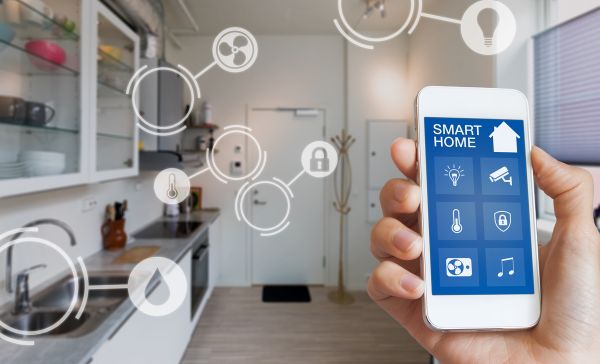The way we interact with technology has undergone a remarkable transformation in recent years. Gone are the days of manually typing commands or searching for information on our devices; instead, we now simply speak to our gadgets, and they respond intelligently. This evolution is thanks to voice recognition technology, which plays a pivotal role in the rise of smart speakers.
Voice Recognition Unveiled
Voice recognition, also known as speech recognition or speech-to-text technology, is a field of artificial intelligence that enables computers to interpret and understand human speech. It has been around for decades but has made significant strides in recent years, making it increasingly accessible and accurate.
The core principle of voice recognition is converting spoken language into text, which a computer can then process. This involves various steps, including acoustic modeling, language modeling, and decoding. Acoustic modeling deals with understanding the sound patterns in speech, language modeling focuses on grammar and context, and decoding matches sounds to words. Together, these processes allow machines to convert spoken words into text, making it possible for us to interact with them using our voices.
The Smart Speaker Revolution
Smart speakers are a perfect example of how voice recognition technology has been integrated into our daily lives. These compact devices, often equipped with virtual assistants like Amazon’s Alexa, Google Assistant, or Apple’s Siri, have changed the way we perform tasks and access information.
Consider this scenario: you wake up in the morning and, without lifting a finger, you ask your smart speaker to check the weather, read you the news, and start your coffee maker. While you get ready for the day, your smart speaker can also adjust your home’s thermostat, set reminders, and even order groceries—all through the power of your voice.
The magic behind smart speakers lies in their ability to not only recognize your voice but also understand your intent. This is achieved through a combination of natural language processing (NLP) and artificial intelligence (AI). NLP allows these devices to comprehend the nuances of human language, including context, idioms, and colloquialisms. AI algorithms process the information and take appropriate actions, making the experience seamless and natural.
Applications Beyond Convenience
While the convenience of smart speakers is undeniable, voice recognition technology goes far beyond making our daily routines easier. It has a wide range of applications that have transformed various industries.
1. Healthcare:
Voice recognition is being used to transcribe patient records and assist doctors in their documentation, improving accuracy and saving time. It is also enabling voice-activated medical devices, enhancing accessibility for patients with limited mobility.
2. Customer Service:
Many companies have implemented voice recognition in their customer service departments. Interactive voice response (IVR) systems can understand and route customer inquiries, reducing the need for human intervention in routine queries.
3. Automotive:
Voice recognition has made its way into the automotive industry, allowing drivers to control infotainment systems, make calls, and set navigation destinations without taking their hands off the wheel. This enhances safety and driver focus.
4. Accessibility:
Voice recognition technology has opened up new horizons for individuals with disabilities. Voice-activated devices and applications have made it easier for people with limited mobility or vision impairments to interact with technology and the world around them.
Challenges and Concerns
While voice recognition technology has made incredible progress, it is not without its challenges and concerns. Privacy is a significant issue, as the always-on nature of smart speakers raises questions about data security and who might be listening to our conversations. To address these concerns, manufacturers are implementing features like voice profile recognition and enhanced data encryption.
Accuracy remains another challenge. While voice recognition technology has come a long way, it’s not infallible. Accents, dialects, and background noise can still lead to misinterpretations. Improving accuracy continues to be a top priority for developers in the field.
The Future of Voice Recognition
Voice recognition technology is poised for continued growth and innovation. As artificial intelligence and machine learning algorithms become more sophisticated, we can expect even more accurate and context-aware voice recognition systems. The integration of voice technology into various industries will continue to expand, making our lives more convenient and accessible.
Furthermore, as the Internet of Things (IoT) ecosystem expands, voice recognition will play a crucial role in connecting and controlling all our smart devices. You can expect a future where your voice will be the key to unlocking the full potential of your smart home, from adjusting the lighting to brewing your morning coffee.
In conclusion, voice recognition technology has ushered in an era of unprecedented convenience and accessibility. Smart speakers are just the beginning, and the applications for this technology are virtually limitless. As voice recognition continues to evolve, it will undoubtedly become an integral part of our daily lives, transforming the way we interact with technology and the world around us.
So, the next time you ask your smart speaker for a weather update or to play your favorite song, take a moment to appreciate the incredible technology that makes it all possible—voice recognition.
In this blog post, we’ve explored the fascinating world of voice recognition and its pivotal role in the rise of smart speakers. We’ve delved into the inner workings of voice recognition technology, the applications beyond convenience, challenges and concerns, and the promising future of this field. As we continue to embrace voice recognition, we can expect a future where our voices become the ultimate interface to the digital world, making our lives more connected, convenient, and accessible than ever before.



